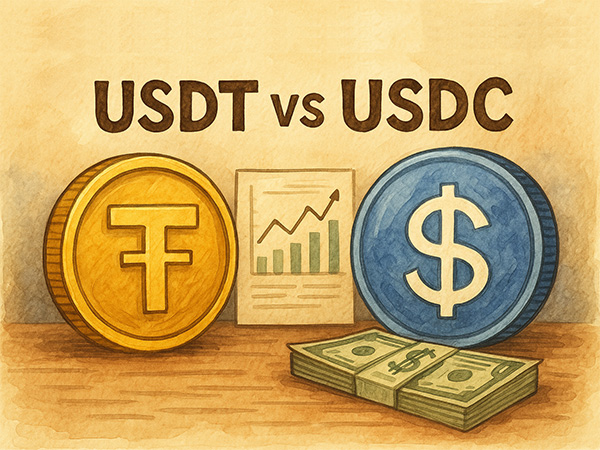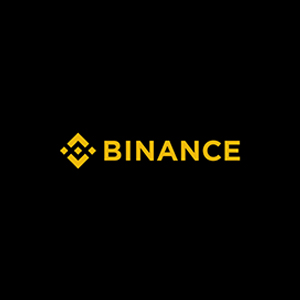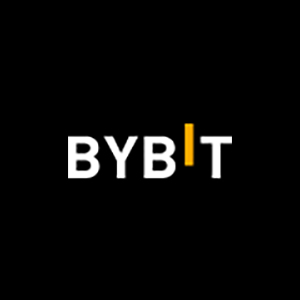USDT vs USDC: What's the Difference? A Comprehensive Guide to the Two Largest Stablecoins

Are USDT and USDC really the same?
If you’ve ever wondered whether all stablecoins are created equal — especially since their prices are always close to $1 — this article will walk you through the actual differences between USDT and USDC, their pros and cons, and some simple usage suggestions.
As of mid-2025, USDT and USDC remain the world’s top two USD stablecoins, with a combined market cap exceeding $215 billion USD (TWD 3 trillion).
USDT vs USDC: Similarities
-
Both are USD-pegged stablecoins, maintaining a 1:1 ratio with the U.S. dollar.
-
Both are issued by centralized entities.
-
Their reserves are primarily composed of U.S. Treasury securities, along with cash and highly liquid instruments like reverse repo agreements.
-
Both publish regular reports on their reserve holdings.
-
Both are widely used and considered mainstream stablecoins within the crypto ecosystem.
USDT vs USDC: Key Differences
-
Issuers:
-
USDT is issued by Tether.
-
USDC is issued by Circle.
-
-
Regulatory compliance:
-
Circle is proactive in complying with U.S. and EU regulations, becoming the first issuer to meet the EU’s MiCA requirements, and listed on the NYSE in June 2025 (Ticker: CRCL).
-
Tether has a more passive approach toward regulation, previously facing investigations and legal actions, and is not MiCA-compliant. It has been delisted by certain platforms in Europe.
-
-
Audit & reserve attestation:
-
Circle’s reserve attestations are audited by Deloitte, one of the Big Four accounting firms.
-
Tether uses BDO, the fifth-largest accounting network (subject to change in the future).
-
-
Market share:
-
USDT is the dominant stablecoin, with a market cap of approximately $154 billion.
-
USDC ranks second, at around $61 billion.
-
-
Ecosystem presence:
-
They are distributed differently across blockchains and supported to varying extents on different exchanges.
-
-
Investment arms:
-
Circle runs Circle Ventures, investing in dozens of crypto projects.
-
Tether’s investments are more opaque but in recent years have expanded into infrastructure and Bitcoin mining.
-
-
Controversies:
-
Tether has faced multiple controversies, such as overlapping executives with Bitfinex, historical lack of transparency in reserves, and fines from U.S. authorities.
-
USDC has so far maintained a cleaner track record with no major public scandals.
-
Summary: USDT vs USDC
Both are well-known, asset-backed stablecoins pegged to USD 1:1, and for most day-to-day use cases, there is no major difference in user experience.
-
If you prioritize regulatory compliance and transparency, USDC may be the more stable choice.
-
If you value liquidity and wide trading support, USDT is more prevalent on exchanges and supported by more trading pairs.
What Are Stablecoins, and Why Do They Matter?
Unlike most cryptocurrencies known for their volatility, stablecoins are designed to remain stable in price.
USD-based stablecoins are pegged 1:1 to the U.S. dollar, and are often seen as the crypto equivalent of fiat dollars.
Stablecoin Q&A
Q: Why do we need price-stable assets in crypto?
A: Stability enables utility — stablecoins are useful as a medium of exchange, a place to park funds, and a means of payment.
They let users stay within the crypto ecosystem without frequently converting back to fiat after every trade.
Q: How do USDT and USDC keep their prices stable?
A: Both are centralized stablecoins issued by a company.
Each stablecoin is backed by real, liquid assets held in reserve.
Users can redeem their coins 1:1 for U.S. dollars, which keeps the price near $1.
This full-reserve + redemption mechanism anchors the peg.
USDT and USDC typically trade near $1. Occasional price swings over 0.3% may occur — arbitrageurs step in during such windows.
Q: So does that mean stablecoins are risk-free?
A: Not entirely. Risks include:
-
Doubts about reserve assets (e.g., fraud or asset misrepresentation)
-
Redemption issues (e.g., large-scale bank run, redemption halt)
As long as reserves and redemptions work as promised, risk remains low — but not zero.
Term: "Depegging"
Occurs when a stablecoin’s price strays significantly from $1, often due to distrust or redemption issues.
For example, USDC briefly depegged to $0.88 during the 2023 collapses of Silvergate and Silicon Valley Bank before recovering.
Q: If prices don’t go up, what’s in it for the issuer?
A: Revenue comes from:
-
Fees: Issuance and redemption fees
-
Yield: Earnings on reserve assets (e.g., U.S. Treasuries)
Stablecoins are not free to mint or redeem — issuers profit from interest income and operational spreads.
What Is USDT?
Launched in 2014, USDT (Tether) is the world’s first stablecoin and now the third-largest cryptocurrency overall, with a market cap of ~$154 billion.
It’s deployed across 90+ blockchains, widely known as “Tether” or simply USDT.
As of early 2024, most of USDT’s reserves were in cash and cash equivalents, primarily U.S. Treasury bills, offering strong liquidity and safety.
USDT Risks:
-
Tether is not fully compliant with all jurisdictions
-
No full independent audits have been published
-
Regulatory transparency has been questioned
Yet, USDT has survived multiple stress events, including the largest stablecoin redemption event in crypto history — over $20 billion redeemed within 3 days, without halting redemptions.
What Is USDC?
USDC is the second-largest USD stablecoin and widely considered the first “compliant” stablecoin.
Issued by Circle, USDC:
-
Complies with U.S. regulations
-
Undergoes regular reserve attestations by Deloitte
-
Was listed on the NYSE in 2025 under ticker CRCL
It addresses many of the criticisms faced by USDT, such as:
-
Lack of audits
-
Regulatory friction
-
Transparency issues
While both USDT and USDC are centralized, USDC places much stronger emphasis on compliance and reporting.
Following the EU’s MiCA law, Circle became the first MiCA-compliant stablecoin issuer in Europe.
USDT vs USDC Recap
Similarities:
-
Both typically trade near $1
-
Both have briefly depegged in extreme market stress
-
Both offer reserve reports
-
Both are fully backed by liquid assets
-
Both are widely distributed across chains
Differences:
-
USDT has higher market share and broader trading pair support
-
USDC is more regulatory-compliant, has undergone audits, and holds multiple international licenses
Stablecoin Popularity Gap
According to Google Trends, USDT is searched over 10x more frequently than USDC, indicating a significant gap in brand awareness and retail reach.
GENIUS Act: U.S. Federal Stablecoin Regulation in 2025
In 2025, the U.S. Congress introduced the GENIUS Act (Guaranteeing Essential Neutrality in the Issuance of Stablecoins Act), setting up a federal regulatory framework for stablecoins.
Key Requirements:
-
Issuers must obtain federal regulatory approval
-
Reserves must consist of highly liquid assets (e.g., cash, Treasuries)
-
Periodic reserve reporting and disclosures are mandatory
-
Interest payments on reserves to retail users are prohibited
-
Must comply with AML and sanctions rules
USDC largely meets these criteria already. Circle is expected to complete further federal registration if the law is enacted.
Tether, however, does not fully comply — lacking federal oversight and independent audits.
Tether has stated it plans to release a new, regulation-compliant stablecoin in the future.
USDT vs USDC: Pros, Cons, and Usage Tips
| USDT | USDC | |
|---|---|---|
| Pros | Most widely used, high liquidity | Regulated, audited, transparent |
| Cons | Regulatory gray zones, less transparency | Lower market awareness, fewer trading pairs |
When to use which?
-
For trading: USDT is more widely supported.
-
For short-term holding: Either works; compare interest rates if relevant.
-
For long-term stability and compliance: USDC is the safer bet.
-
Best practice: Diversify holdings; don’t put all your stablecoin eggs in one basket.
Are There Other Stablecoins?
Absolutely. Beyond centralized USD stablecoins like USDT and USDC, there are:
-
Decentralized stablecoins: Algorithmic or overcollateralized (e.g., DAI)
-
Non-USD stablecoins: Pegged to currencies like EUR (e.g., EURC)
What matters most is price stability.
When evaluating a stablecoin, always check:
-
How the peg is maintained
-
What assets back it
-
Whether redemptions are possible and credible
If unclear or uncertain, use them only for short-term storage, and always prioritize safety and transparency.
Stablecoin Use Cases: Beyond Trading
In the near future, stablecoins could power:
-
Cross-border settlements
-
Merchant payments
-
Programmable financial services
Payment giants are already exploring the space — PayPal’s PYUSD is a key example.
-
Sign Up

OKX
OKX is a leading global digital asset trading platform offering spot and derivatives services for cryptocurrencies.
-
Sign Up

Binance
Binance is one of the world's largest cryptocurrency exchanges, offering spot, futures, staking, and a wide range of digital asset services.
-
Sign Up

Bybit
Bybit is a global cryptocurrency exchange specializing in derivatives, spot trading, and crypto-financial products.
-
Sign Up

Gate.io
Gate.io is a leading crypto exchange offering diverse trading options, low fees, and strong security since 2013.
